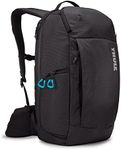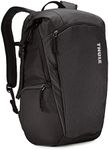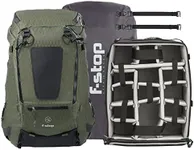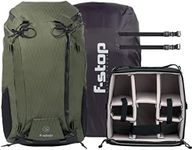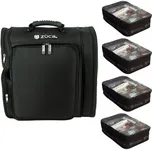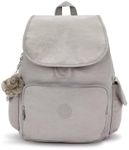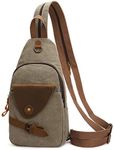Buying Guide for the Best Camera Backpacks For Hiking
Choosing the right camera backpack for hiking is crucial to ensure that your gear is protected, easily accessible, and comfortable to carry over long distances. When selecting a camera backpack, consider the type of hiking you will be doing, the amount of gear you need to carry, and your personal comfort preferences. Here are some key specifications to consider when choosing a camera backpack for hiking.CapacityCapacity refers to the amount of space available in the backpack to store your camera gear and other essentials. This is important because you need to ensure that all your equipment fits comfortably without being too cramped or too loose. Backpacks with smaller capacities (10-20 liters) are suitable for short hikes with minimal gear, while medium capacities (20-30 liters) are ideal for day hikes with a moderate amount of equipment. Larger capacities (30+ liters) are best for longer hikes or trips where you need to carry additional items like clothing, food, and extra gear. Choose a capacity based on the length of your hikes and the amount of gear you typically carry.
WeightThe weight of the backpack itself is an important consideration, especially for long hikes. A lighter backpack will be easier to carry and reduce overall fatigue. However, lighter backpacks may have fewer features or less padding. Backpacks weighing less than 2 pounds are considered lightweight and are suitable for shorter hikes or minimal gear. Those weighing between 2-4 pounds offer a balance between weight and features, making them suitable for most day hikes. Heavier backpacks (4+ pounds) may offer more protection and features but can be cumbersome for long distances. Choose a weight that balances comfort and functionality based on your hiking needs.
Comfort and FitComfort and fit are crucial for a camera backpack, especially when hiking. This includes features like padded shoulder straps, a padded back panel, and a waist belt to distribute weight evenly. A well-fitting backpack will reduce strain on your back and shoulders, making it easier to carry for extended periods. Adjustable straps and ergonomic designs can enhance comfort. Try on different backpacks to see which one feels the most comfortable and offers the best support for your body type and hiking style.
Durability and MaterialDurability and material are important to ensure that your backpack can withstand the rigors of hiking and protect your gear from the elements. Look for backpacks made from high-quality, water-resistant materials like nylon or polyester. Reinforced stitching and durable zippers are also important for longevity. Some backpacks come with a rain cover for added protection. Choose a backpack that offers the right balance of durability and weight for your hiking conditions.
Accessibility and OrganizationAccessibility and organization refer to how easily you can access your gear and how well the backpack is organized. This is important for quickly retrieving your camera or other items without having to unpack the entire bag. Look for backpacks with multiple compartments, padded dividers, and quick-access pockets. Some backpacks have side or front access panels for easy camera retrieval. Choose a backpack with an organizational layout that suits your shooting style and gear setup.
Weather ProtectionWeather protection is crucial for keeping your camera gear safe from rain, snow, and dust. Many camera backpacks come with built-in rain covers or are made from water-resistant materials. This is important for ensuring that your equipment stays dry and functional in various weather conditions. If you frequently hike in wet or unpredictable weather, look for a backpack with robust weather protection features. Choose a level of weather protection based on the typical conditions you encounter during your hikes.
